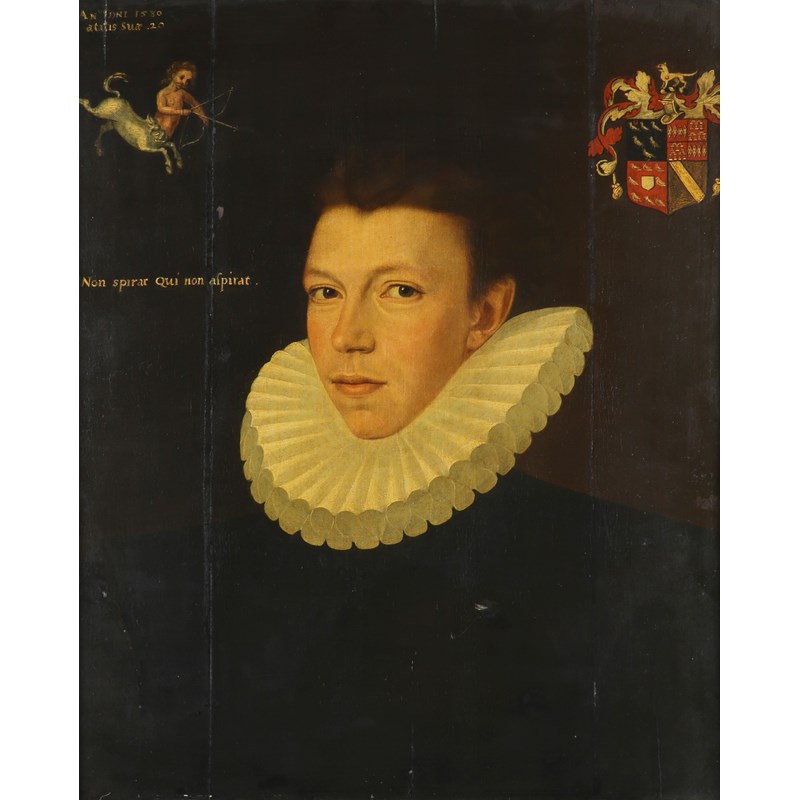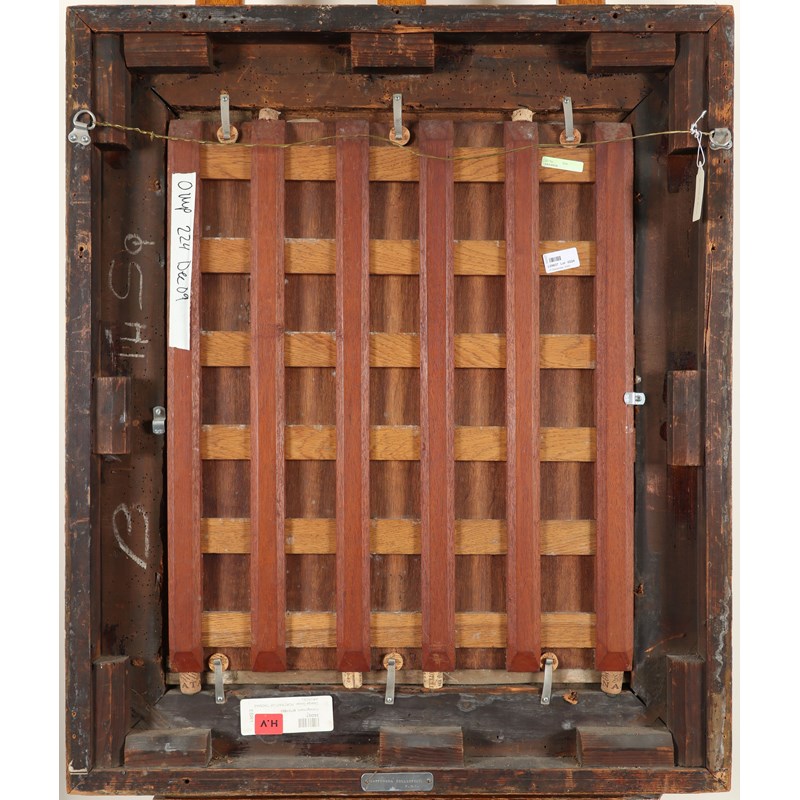Old Masters, British & European Paintings - 08 Sep 2020
George Gower (c.1540-1596) Portrait of a gentleman
George Gower (c.1540-1596)
Portrait of a gentleman, traditionally identified as Thomas Arundell, later 1st Baron Arundell of Wardour (c.1560-1639)
Inscribed ANº DNI 1580 / atatis sua .20 (upper left above the centaur), Non spirat Qui non afpirat (centre left) and charged upper right with the sitter's coat of arms
Oil on panel
60.6 x 50.9cm; 23¾ x 20in
Provenance:
Sold by a descendant of the sitter's family, Christie's, 1874;
Henry George Bohn (1796-1884);
Possibly Cyril Flower, 1st Baron Battersea (1843-1907);
Constance de Rothschild, Lady Battersea (1843-1931);
Lionel de Rothschild (1882-1942);
Edmund de Rothschild (1916-2009);
The Trustees of Exbury House
Literature:
The Archaeological Journal, vol. xxxi, p.303;
Henry George Bohn, Catalogue of the Pictures, Miniature and Art Books, Collected During the Last Fifty Years, (London, 1884) no.82 (as Lucas de Heere);
Edward Town and Jessica David, 'George Gower: portraitist, Mercer, Serjeant Painter', in The Burlington Magazine, no. 162 (September 2020), p.732, foot note 8
Exhibited:
Bath, Victoria Art Gallery, Pictures and Porcelain from the collection of Edmund de Rothschild, 21 May - 2 July 1988, no. 1
Thomas Arundell was born into an important and wealthy Wiltshire family. As a young man he was imprisoned for his fervent Roman Catholicism, but proved his loyalty to the crown in 1588 by subscribing £100 towards the defeat of the Spanish Armada.
In 1595, Arundell's father provided him with money and horses, in order to serve the Imperial forces against the Turks. Allegedly he was recommended to the Holy Roman Emperor by Queen Elizabeth herself. Arundell repaid this debt on 7 September 1595, when he stormed the breach at Gran, capturing the Turkish standard and replacing it with the Imperial Eagle. For this he was created a Count of the Holy Roman Empire by Rudolf II, and became known as 'the valiant'. However, when he returned to England he refused to renounce this foreign title. His father was furious and disinherited him, objecting to his superior rank, and the Queen committed him to Fleet Prison, saying that 'I would not have a sheep branded with another man's mark'.
Arundell was later released, and his fortunes improved under James I. He was created 1st Baron Arundell of Wardour in 1605, and appointed Colonel of the English regiment in the Spanish Netherlands, serving under Albert VII, Archduke of Austria. In the same year he was briefly suspected of complicity with the Gunpowder Plot, having been named by Guy Fawkes under torture. He died in 1639 at the family home of Wardour Castle, and was buried in Tisbury. His was succeeded by his son Thomas, who was a prominent royalist in the Civil War.
The identification of the sitter as Thomas Arundell was first proposed by Henry Bohn in the late nineteenth century. The dating of the work supports this identification, although the presence of the crescent moon in the coat-of-arms suggests that it may be Thomas' younger brother William Arundell (d. 1592).






 Live online bidding is available via our own
Live online bidding is available via our own